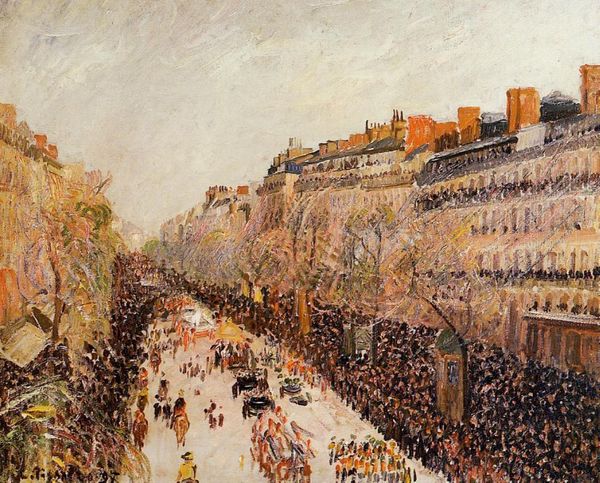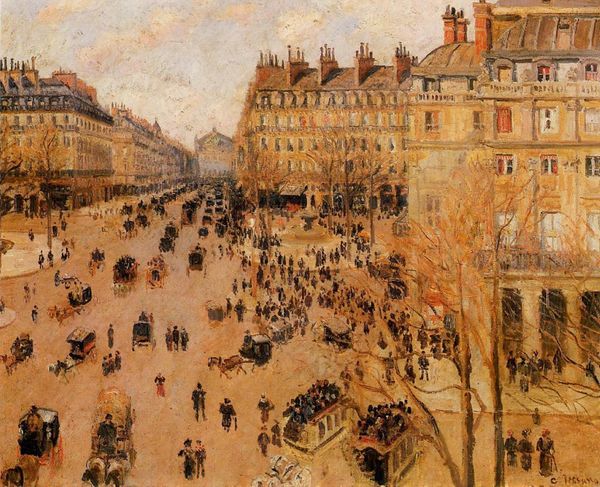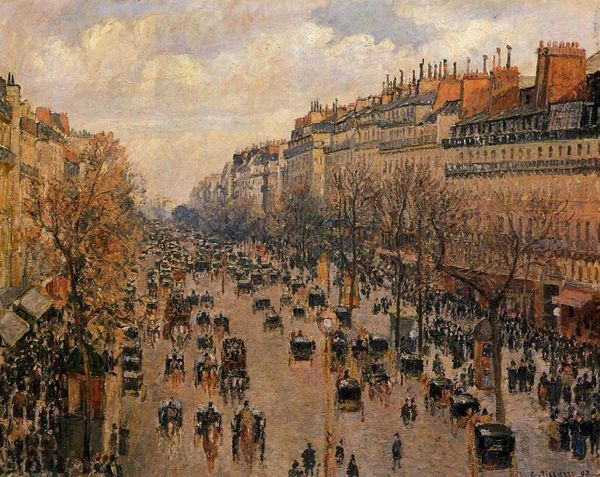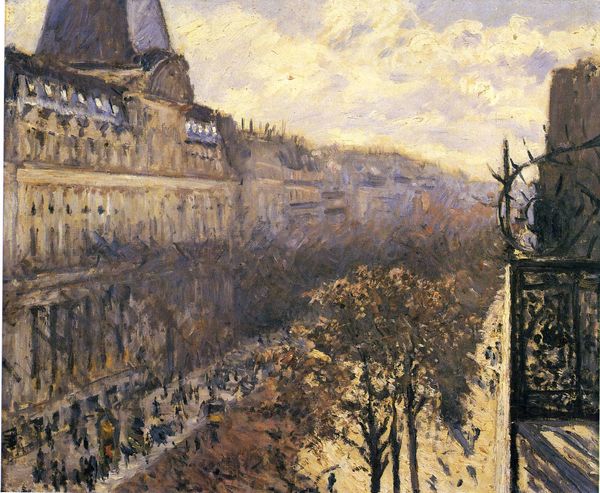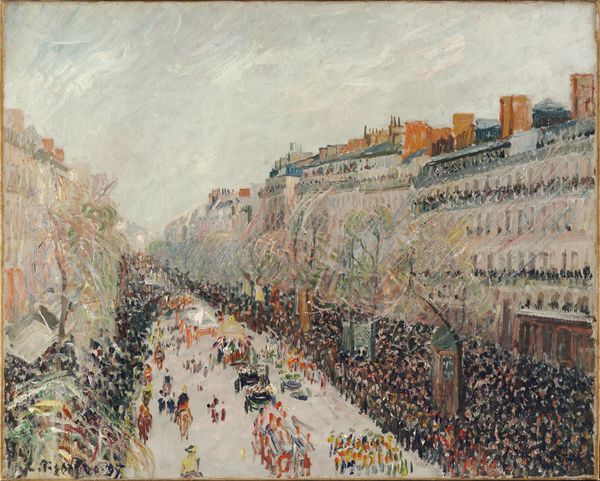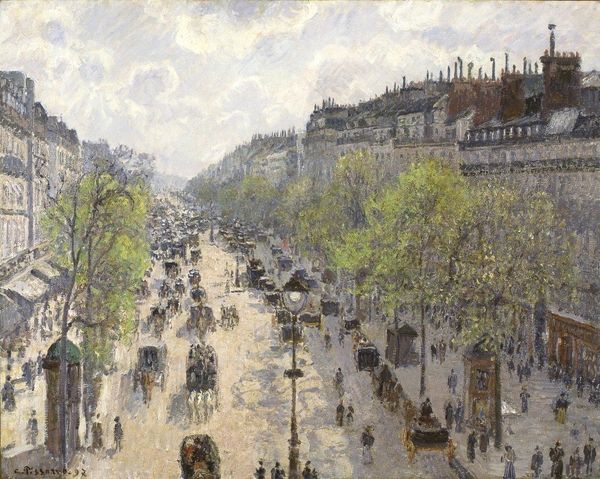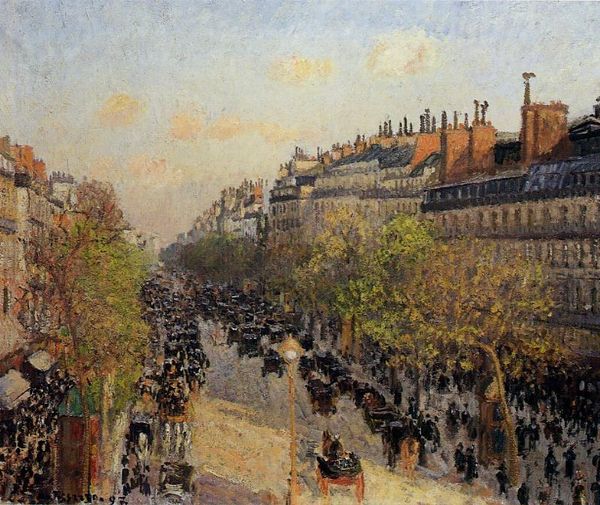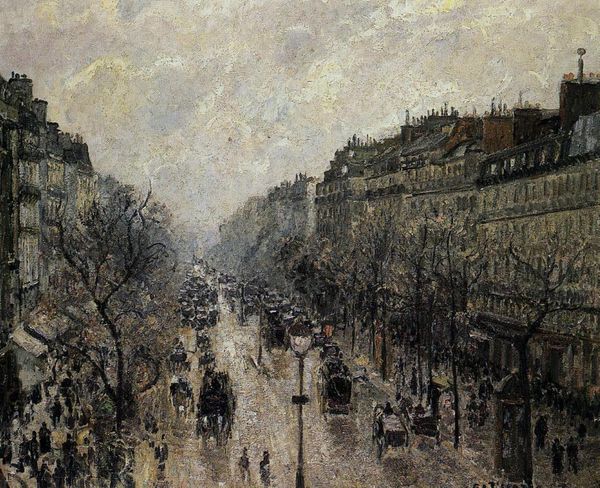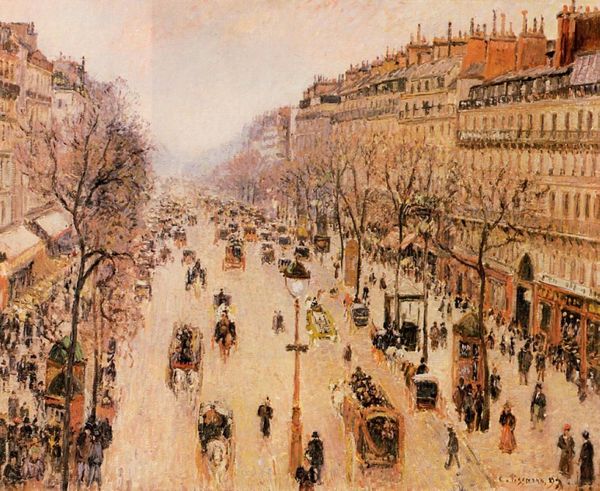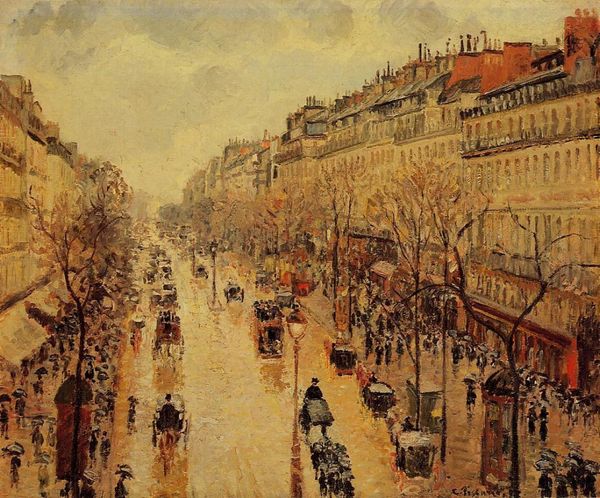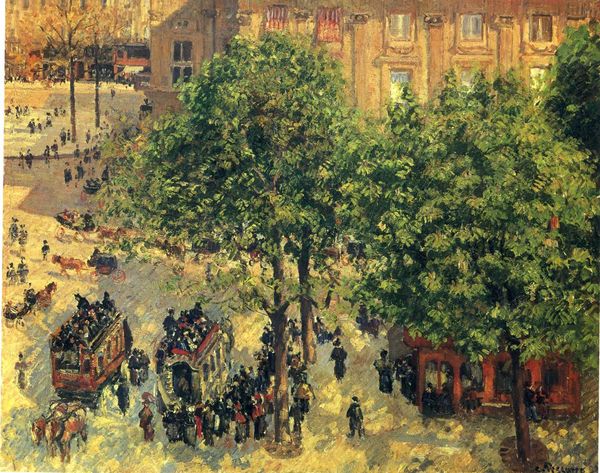
Dimensions: 63.5 x 80 cm
Copyright: Public domain
Curator: The overwhelming feeling this painting evokes is a bittersweet kind of bustle. Editor: Indeed. This is "Boulevard Montmartre, Mardi Gras" by Camille Pissarro, painted in 1897. What we’re seeing is a bird’s-eye view, looking down on a Parisian street filled with people celebrating Carnival. It's oil on canvas, painted during his period focusing on urban landscapes from elevated vantage points. Curator: The swarming crowd almost merges into a single entity. Pissarro captures a mass psychology. Each brushstroke contributing to a grand spectacle and yet also blurring individual faces and costumes into a uniform throng. It feels symbolic of the way festive joy can both unite and subsume identity. Editor: Absolutely, and let's not forget the historical context. This was painted during the French Third Republic, a time of great social change and burgeoning class consciousness. These joyous public displays offered an opportunity for various classes to mix, if briefly, in the shared spirit of revelry. This sense of a crowd claiming urban space carries revolutionary echoes, though, of course, cloaked in the trappings of traditional celebration. Curator: It also speaks to something deeply rooted in human nature: the need for communal release and catharsis, embodied in rituals like Mardi Gras. Look at the way he uses light; it isn’t about clarity. The atmospheric perspective almost renders the city itself as another participant in the grand charivari. Editor: I agree, the impressionistic technique is critical. Pissarro's loose brushwork doesn’t attempt to offer any specifics, so much as capture a feeling, a fleeting moment in time. It reinforces the temporary nature of these festivities, a brief suspension of everyday life. What's interesting, too, is who has access to this moment. Are we invited as voyeurs into their collective joy? Curator: Or, from a symbolic perspective, do we also see our collective shadow? Pissarro is a reminder that every crowd consists of singular actors enacting very different desires under a similar guise. He’s encouraging the viewer to self-identify among the players in the composition. Editor: Yes, the work resonates because these carnivals provide licensed transgressions of the normal rules. Looking at it through that lens—class relations, political climate—reveals deeper layers. Pissarro reminds us, through effervescent technique, of the underlying power dynamics at play, whether it is during Mardi Gras or at other points of urban convergence. Curator: Exactly. The continuity of these cycles provides solace while they’re being enjoyed, and material for reflection once they become part of the shared cultural memory. Editor: Pissarro presents that opportunity for engagement with an aesthetic experience that can transcend that moment captured so beautifully.
Comments
No comments
Be the first to comment and join the conversation on the ultimate creative platform.
